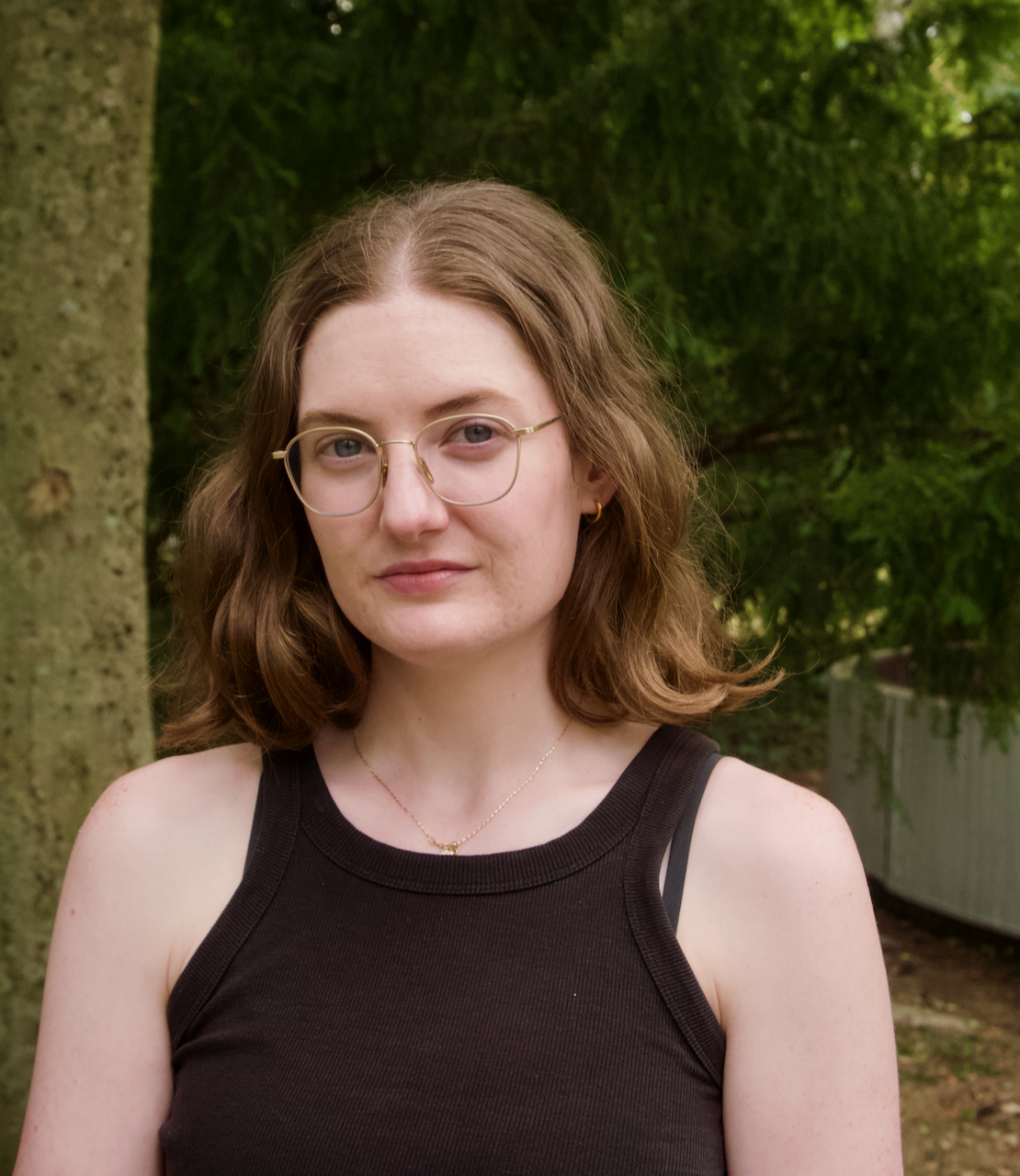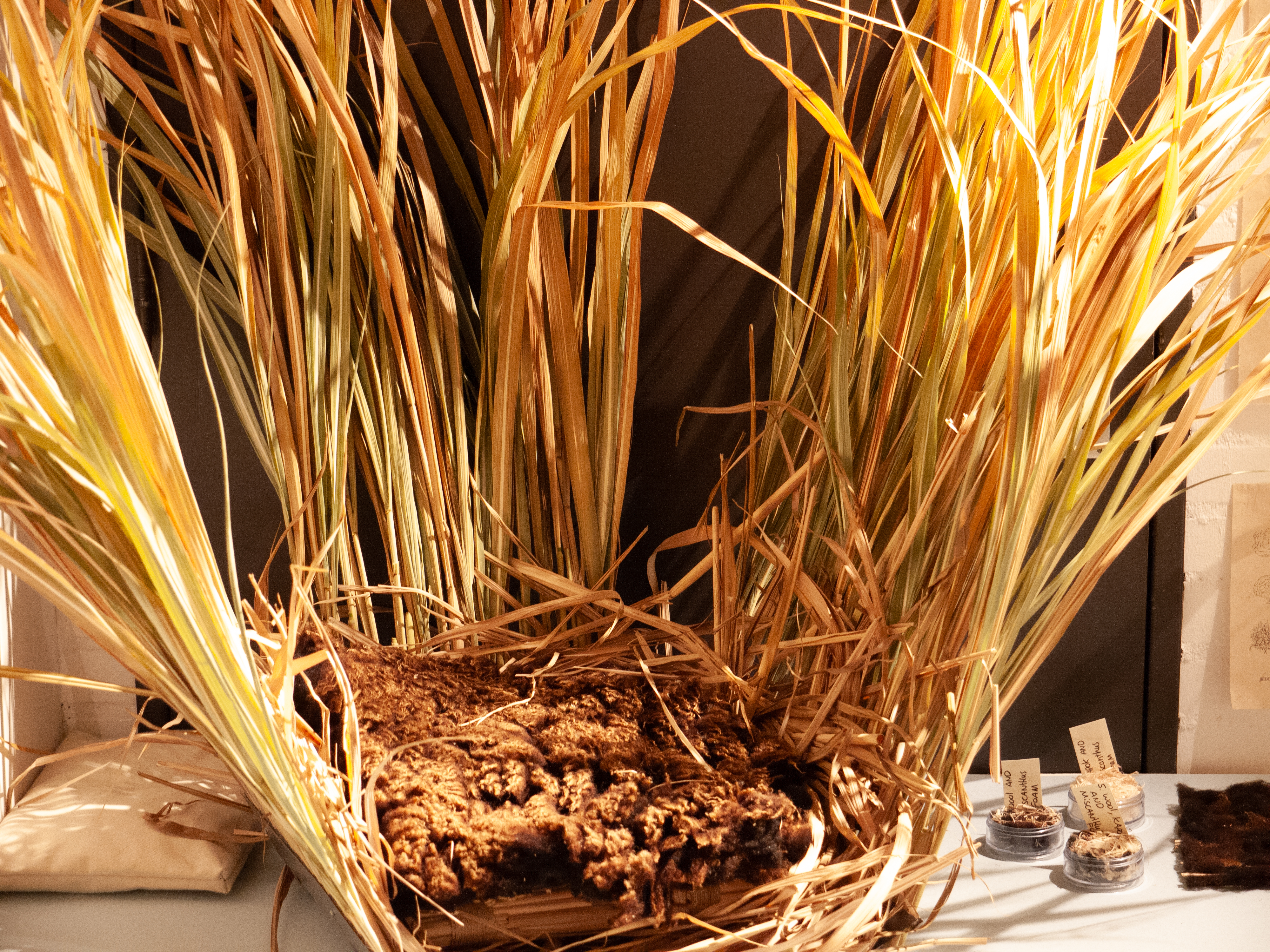When Kinga (28) from Hungary and Eva (27) from Finland met in their first year at the Willem de Kooning Academy, they couldn’t have imagined that a few years later they would be running their own studio together. Both graduated in 2024 - Kinga in Graphic Design, Eva in Fashion Design -after navigating the challenges of studying during the pandemic. Today, they are building Studio Yes Yes, a practice that moves between graphic design, fashion, photography, with a focus on artistic projects.
How did you end up at WdKA?
Kinga: I graduated high school in 2015 and first studied Landscape Architecture. During that time I realized I was more drawn to the visual side of things, so I switched to Graphic Design in Budapest in 2018. But the program felt very old-fashioned. I wanted something fresh and modern, and I felt the Netherlands had that design approach. I applied to both KABK and WdKA, and in the end, it was the open and inviting atmosphere at WdKA that made me choose Rotterdam.
Eva: I’m originally from Finland and spent about two and a half years in Helsinki after high school. I had studied audiovisual communication and tried to get into a programme there, but it was highly competitive. When the pandemic hit, I started looking at international options and applied to schools in Antwerp and Rotterdam. WdKA felt like the right place, so I applied and got accepted in the Graphic Design department, where I met Kinga. After one year I realized that the programme did not fit right with me, and I chose to switch to Fashion Design. I’ve always seen both practices as connected, and since I love expressing myself visually, I initially thought graphic design was the right path. But my real passion has always been fashion, so I decided to shift directions, learn more about the industry, and get hands-on experience. It turned out to be a great decision. Even though I’m not working as a fashion designer now, the experience was truly valuable.
How did you experience your time at the academy?
Kinga: We started during COVID, which was difficult. Our class couldn’t really bond in the first year despite efforts from the academy. Luckily, Eva and I connected early on in a small group. We still had access to the stations, which made a big difference. From the second year onwards, things opened up and we could finally build connections on campus.
Eva: The first year feels like a blur, lots of online classes. But the small groups where we could meet in person were very fun, and that’s how we got close. It was overwhelming at first, with so many facilities at the academy. But that variety also opened up new ways of working.
How did you start working together?
Kinga: At first, it was very casual. Eva did fashion photography, and I sometimes modeled for her. But the first real collaboration was during the Visual Cultures minor in our final year.
Eva: We did a performance at Brutus during a group exhibition with the minor in January 2024. I designed clothes with a visual installation, and Kinga created a vocal performance based on a poem I wrote.
Kinga: That was when we realized how well our practices could connect. Eva is very interested in writing, and I’m also a classical singer, so we started combining our skills.
How did Studio Yes Yes come to life?
Kinga: It started as a joke. In May 2024 we went to a concert and started talking about graduation and what to do next. Freelancing separately, or maybe together?
Eva: A friend came up with the name one evening, and we started to take it seriously. We used the Business Station to get started with the practicalities and realized our skills were complementary. Kinga brought in industry experience from being an intern at Glamcult Studio, and I had been doing fashion photography and community building through different jobs. We decided to build a portfolio together and spread the word.
Kinga: Our first official project was a collaboration with Louisa von Moreau, a fellow WdKA student, who asked us to design and curate her book and exhibition. We started the project in 2024 and launched it at RIB in Rotterdam in September 2025.
Eva: It was amazing to see it all come together: Kinga designed the book, and I curated both the book and the exhibition.
What does your collaboration look like now?
Eva: I focus mostly on fashion photography and creative direction.
Kinga: And I focus on graphic design and conceptual work. Together, we move between these fields and explore where they overlap.
What was the transition like after graduation?
Kinga: It was challenging. The academy is like a bubble, and after you leave, you ask yourself: where am I? What do I want to do? The uncertainty was very overwhelming.
Eva: For me, the lack of open opportunities within the creative industry was frustrating. That’s one of the reasons I wanted to create my own possibilities by starting a studio. It’s not always easy, but it gives me more freedom.
How has the first year of Studio Yes Yes been?
Eva: The biggest challenge has been time. I also have a day job, so it’s about balancing everything. But the biggest highlight was definitely this autumn, with our book launch and magazine launch. The magazine is called Scaffolding B8 and was edited by fellow WdKA student Mateusz Wiśniewski. It was amazing to work on this project and seeing months of work come together was very rewarding.
Kinga: Freelancing is different than I imagined. I also work four days a week as a designer for Quooker and spend one day on Yes Yes. I needed some time to realize, that my personality doesn't really match with the nature of freelancing work. That's why we shifted our studio structure a bit towards Eva having more responsibilities, and me mostly working for her. It’s a constant balancing act, but seeing our work in print and exhibited has been amazing.
What was the most valuable part of your time at WdKA?
Kinga: The conceptual training. Developing ideas strategically, step by step - that has been so valuable. And of course, the people I met, who helped me find my path.
Eva: For me, it was learning to reflect. At first, I didn’t like it, but now it’s my favorite part of the creative process. And the friendships and collaborations that grew out of WdKA have been essential.
What advice would you give to current WdKA students?
Kinga: Make use of the resources you have now: the stations, the network, and the teachers. And don’t hesitate to talk about your struggles. This is the only time you’ll be surrounded by so many creative people.
Eva: Step out of your comfort zone and connect with others. Collaboration is incredibly valuable. And use the stations as much as possible! I only discovered the metal station in my fourth year, and I wish I had started earlier because I loved it so much.


